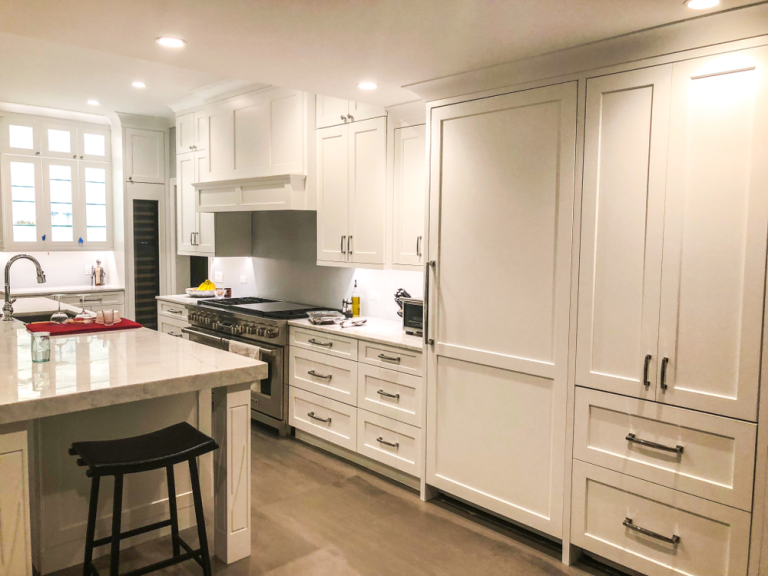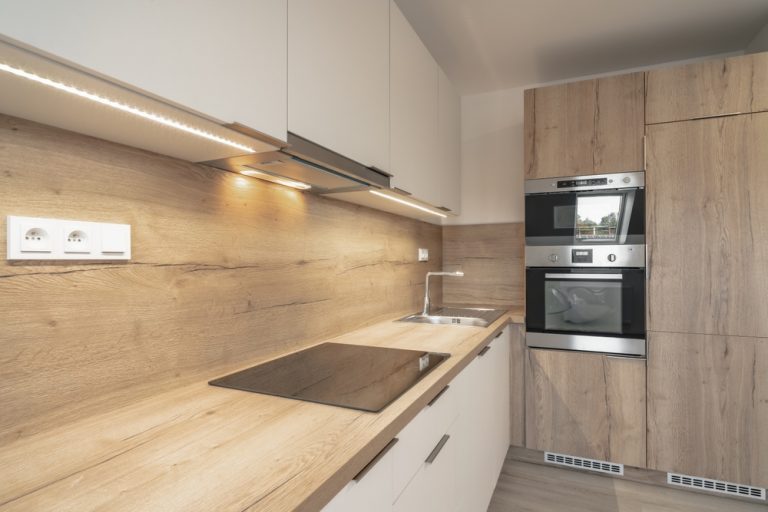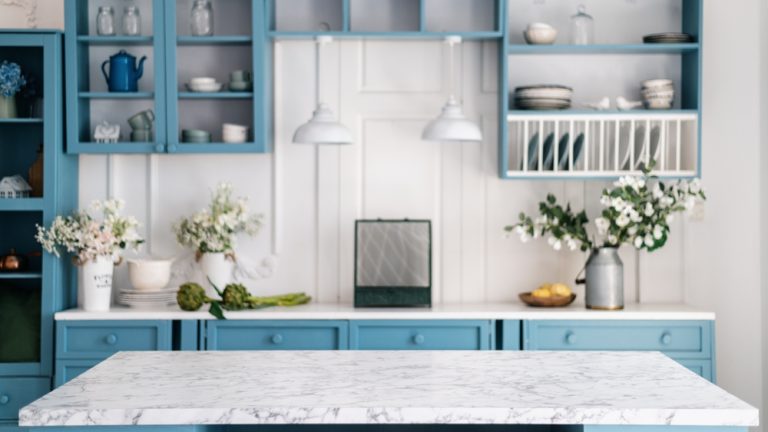How to Hide Kitchen Cabinet Hinges?

Kitchen cabinet hinges are essential for functionality, but they can sometimes detract from the clean, seamless look many homeowners desire. If you’re looking to update your kitchen’s appearance or simply prefer a more streamlined design, learning how to hide kitchen cabinet hinges can make a significant difference.
In this blog, we’ll explore different methods for concealing hinges, whether you’re planning a full kitchen remodel or just a quick update.
Why Hide Kitchen Cabinet Hinges?
Before diving into the methods, it’s important to understand why you might want to hide kitchen cabinet hinges. Concealed hinges can create a more modern, sleek look in your kitchen. Visible hinges can sometimes disrupt the flow of your cabinet design, especially if they don’t match the finish of your cabinets or if you prefer a minimalist aesthetic.
Benefits of Hidden Hinges
- Sleek Aesthetic: Hidden hinges contribute to a cleaner, more streamlined look by eliminating visible hardware that might clash with your cabinet design.
- Modern Appeal: Concealed hinges are often associated with modern and contemporary kitchen designs, giving your kitchen an updated, sophisticated appearance.
- Easy Maintenance: Without visible hinges, cleaning the cabinet doors becomes easier, as there are no small crevices to collect dust or grime.
Types of Concealed Hinges
When it comes to hiding kitchen cabinet hinges, the most effective method is to use concealed or “hidden” hinges. These hinges are installed inside the cabinet door, making them invisible from the outside when the door is closed.
Common Types of Concealed Hinges
- European Hinges: Also known as cup hinges, European hinges are widely used in modern cabinetry. These hinges are mounted on the inside of the cabinet and are adjustable, allowing for precise alignment. They are ideal for frameless cabinets and can be used on both overlay and inset doors.
- Mortise Hinges: Mortise hinges are embedded into the cabinet door and frame, making them less visible. They are typically used in traditional cabinetry, where the door is inset into the frame. While not entirely hidden, mortise hinges offer a more discreet look than standard hinges.
- Surface-Mounted Concealed Hinges: These hinges are mounted on the surface of the cabinet but are designed to be less visible than traditional hinges. They are often used in situations where full concealment isn’t possible but a more subtle appearance is desired.
Also Read – How to Hang Mini Wreaths on Kitchen Cabinets?
How to Install Concealed Hinges?
If you’re interested in hiding your kitchen cabinet hinges, replacing your existing hinges with concealed ones is the best option. Here’s a step-by-step guide to help you install concealed hinges on your cabinets.
Step 1: Choose the Right Hinges
- Measure Your Cabinets: Before purchasing concealed hinges, measure your cabinet doors and frames to ensure you choose the correct size and type of hinge. Consider the overlay or inset design of your doors, as this will determine the type of hinge you need.
- Select the Hinge Type: Choose between European hinges, mortise hinges, or surface-mounted concealed hinges based on your cabinet design and desired level of concealment. full concealment isn’t possible but a more subtle appearance is desired..
Step 2: Remove the Old Hinges
- Detach Cabinet Doors: Start by removing the cabinet doors from the frames. Use a screwdriver to unscrew the existing hinges from both the door and the cabinet frame. Be sure to keep the screws and hinges in a safe place in case you need them for future use.
- Fill Screw Holes (If Necessary): If the new hinges don’t align with the existing screw holes, fill the old holes with wood filler. Once the filler is dry, sand the area smooth to create a clean surface for the new hinges.
Step 3: Mark and Drill Holes for New Hinges
- Mark the Hinge Placement: Position the new concealed hinges on the inside of the cabinet door. Use a pencil to mark the spots where the screws will go. If you’re using European hinges, you’ll also need to mark the location for the cup, which requires a larger hole.
- Drill the Holes: Use a drill to create pilot holes for the screws. If you’re installing European hinges, use a Forstner bit to drill the cup hole in the cabinet door. Be sure to drill straight and to the correct depth to ensure a proper fit.
Step 4: Attach the Hinges
- Install the Hinges on the Door: Align the hinges with the drilled holes and use screws to attach them to the cabinet door. Make sure the hinges are securely fastened and that they move smoothly.
- Mount the Door to the Cabinet Frame: Once the hinges are attached to the door, position the door on the cabinet frame. Align the hinges with the frame and secure them with screws. Check to ensure that the door opens and closes smoothly and that it sits flush with the cabinet frame.
Step 5: Adjust the Hinges
- Fine-Tune the Alignment: Most concealed hinges, especially European hinges, allow for adjustments in three directions: up and down, side to side, and in and out. Use these adjustments to ensure the cabinet doors are perfectly aligned and operate smoothly.
- Test the Doors: Open and close the cabinet doors several times to test the hinges. Make any final adjustments as needed to achieve a seamless look.
Alternative Methods to Hide Hinges
If replacing your hinges with concealed ones isn’t an option, there are alternative methods you can use to minimize the visibility of your existing hinges.
Paint the Hinges
- Match with Cabinet Color: One simple way to make hinges less noticeable is to paint them the same color as your cabinets. Use a high-quality metal paint and a small brush to carefully paint the hinges. This can help them blend in with the cabinet doors, making them less visible.
- Choose a Neutral Color: If you don’t want to paint the hinges the exact color of the cabinets, consider using a neutral color that matches other hardware in your kitchen. This can create a more cohesive look and draw less attention to the hinges.
Use Decorative Hinges
- Opt for Stylish Hinges: If you can’t hide the hinges, consider making them a part of your kitchen’s design. Decorative hinges come in various styles and finishes, allowing you to choose a design that complements your cabinet hardware and overall kitchen décor.
- Create a Coordinated Look: Choose decorative hinges that match your cabinet knobs, pulls, and other hardware to create a coordinated and intentional look. This approach works well in traditional or rustic kitchens where exposed hardware adds to the aesthetic.
Add Molding or Trim
- Conceal Hinges with Trim: In some cases, adding molding or trim to your cabinet doors can help hide the hinges. This is particularly effective with inset doors where the hinge may be slightly exposed. The trim can be painted or stained to match the cabinet finish, creating a seamless appearance.
- Customize Your Cabinets: Adding trim is a customizable option that allows you to enhance the look of your cabinets while also concealing the hinges. This method is best suited for DIY enthusiasts or those planning a more extensive kitchen update.
Maintaining Hidden Hinges
Once you’ve successfully hidden your kitchen cabinet hinges, it’s important to maintain them to ensure they continue to function smoothly and look great.
Regular Cleaning
- Dust and Wipe Down: Even hidden hinges can accumulate dust and grime over time. Regularly dust and wipe down the hinges with a soft cloth to keep them clean. Avoid using harsh chemicals that could damage the hinges or the cabinet finish.
Lubrication
- Prevent Squeaking: To prevent the hinges from squeaking or becoming stiff, apply a small amount of lubricant, such as silicone spray or WD-40, to the moving parts. This will keep the hinges operating smoothly and extend their lifespan.
Periodic Adjustments
- Check for Alignment: Over time, cabinet doors can shift or become misaligned. Periodically check the alignment of the doors and make any necessary adjustments to the hinges to maintain a clean, seamless look. is best suited for DIY enthusiasts or those planning a more extensive kitchen update.
Conclusion
Learning how to hide kitchen cabinet hinges can significantly enhance the appearance of your kitchen, giving it a more modern and polished look. Whether you choose to install concealed hinges, paint your existing hinges, or use alternative methods like decorative hinges or trim, there are plenty of options to achieve the desired effect.
By following the steps outlined in this guide, you can successfully hide your kitchen cabinet hinges, creating a sleek and stylish kitchen that reflects your personal taste. Regular maintenance will ensure that your concealed hinges continue to function smoothly and look great for years to come.






